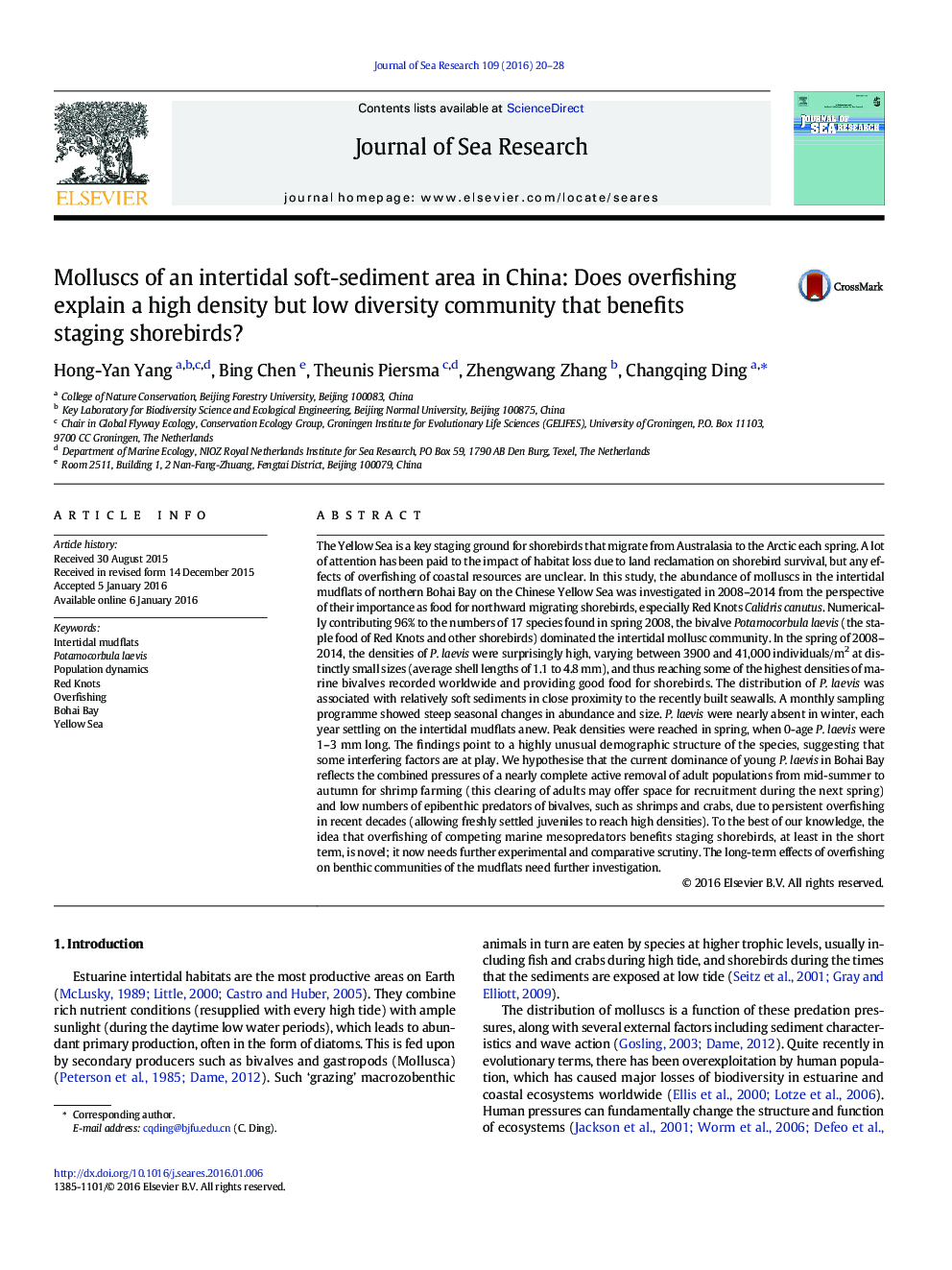| کد مقاله | کد نشریه | سال انتشار | مقاله انگلیسی | نسخه تمام متن |
|---|---|---|---|---|
| 4549564 | 1627466 | 2016 | 9 صفحه PDF | دانلود رایگان |
• The mollusc community in Bohai Bay is overwhelmingly dominated by a single bivalve species, Potamocorbula laevis, which has extremely high density in spring, offering very good food conditions for shorebird migrants.
• Spat of P. laevis in predictably high densities in spring may be caused by the combined pressures of a nearly complete removal by siphoning in summer and autumn for shrimp farming and low numbers of competing marine mesopredators due to the consistent overfishing in recent decades.
The Yellow Sea is a key staging ground for shorebirds that migrate from Australasia to the Arctic each spring. A lot of attention has been paid to the impact of habitat loss due to land reclamation on shorebird survival, but any effects of overfishing of coastal resources are unclear. In this study, the abundance of molluscs in the intertidal mudflats of northern Bohai Bay on the Chinese Yellow Sea was investigated in 2008–2014 from the perspective of their importance as food for northward migrating shorebirds, especially Red Knots Calidris canutus. Numerically contributing 96% to the numbers of 17 species found in spring 2008, the bivalve Potamocorbula laevis (the staple food of Red Knots and other shorebirds) dominated the intertidal mollusc community. In the spring of 2008–2014, the densities of P. laevis were surprisingly high, varying between 3900 and 41,000 individuals/m2 at distinctly small sizes (average shell lengths of 1.1 to 4.8 mm), and thus reaching some of the highest densities of marine bivalves recorded worldwide and providing good food for shorebirds. The distribution of P. laevis was associated with relatively soft sediments in close proximity to the recently built seawalls. A monthly sampling programme showed steep seasonal changes in abundance and size. P. laevis were nearly absent in winter, each year settling on the intertidal mudflats anew. Peak densities were reached in spring, when 0-age P. laevis were 1–3 mm long. The findings point to a highly unusual demographic structure of the species, suggesting that some interfering factors are at play. We hypothesise that the current dominance of young P. laevis in Bohai Bay reflects the combined pressures of a nearly complete active removal of adult populations from mid-summer to autumn for shrimp farming (this clearing of adults may offer space for recruitment during the next spring) and low numbers of epibenthic predators of bivalves, such as shrimps and crabs, due to persistent overfishing in recent decades (allowing freshly settled juveniles to reach high densities). To the best of our knowledge, the idea that overfishing of competing marine mesopredators benefits staging shorebirds, at least in the short term, is novel; it now needs further experimental and comparative scrutiny. The long-term effects of overfishing on benthic communities of the mudflats need further investigation.
Journal: Journal of Sea Research - Volume 109, March 2016, Pages 20–28
